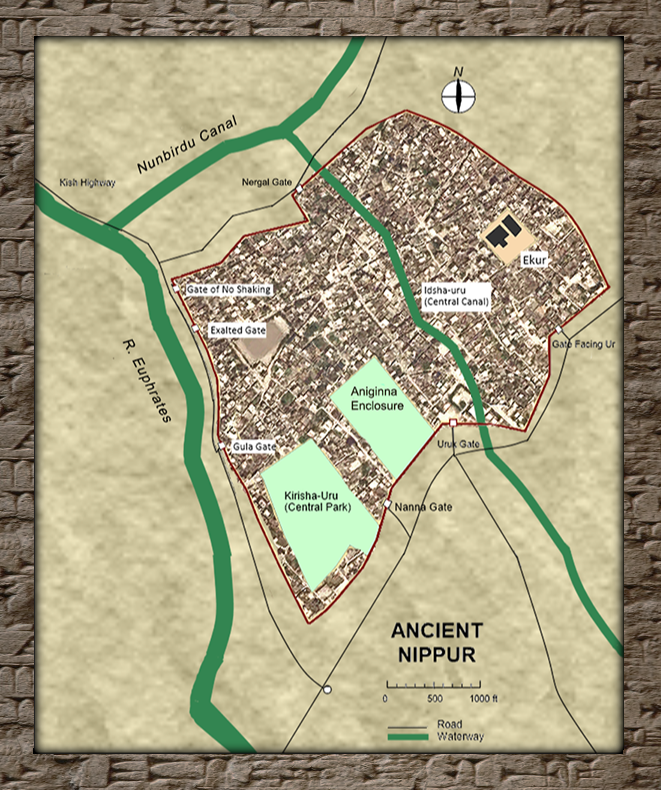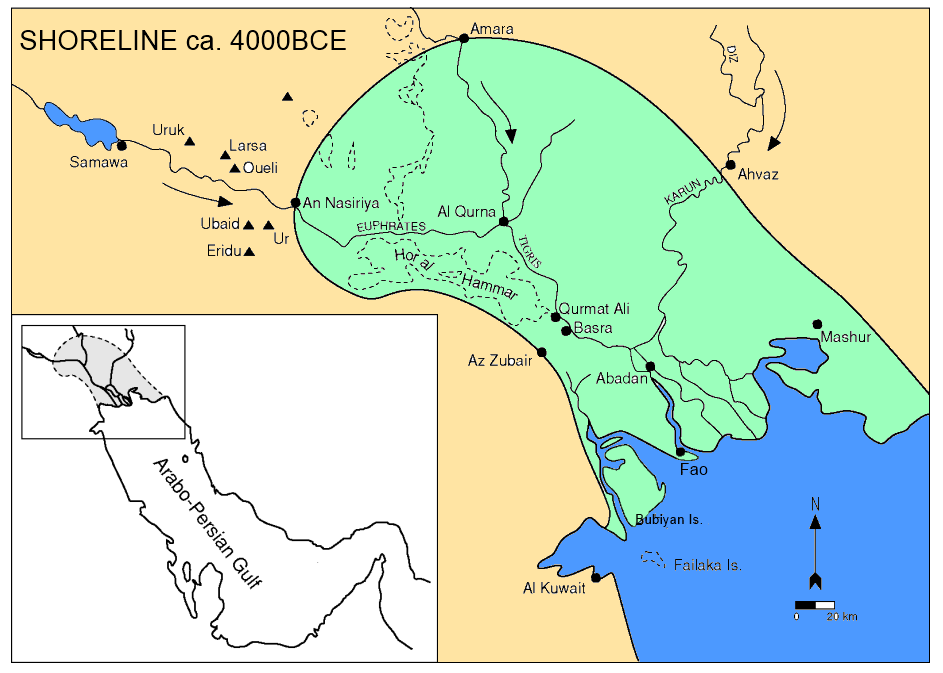Maps
Click on any map to see an enlarged version. To get back here, simply press “Back” on your keyboard, or tap the back arrow on your portable device.
Uruna’s Sumer
To get an idea of distances and directions, I put together this map showing mostly known cities and towns, as well as a few I invented for the story.

Note the legend dashed line showing a person’s daily walking trek over paths and highways. Remember, Sumerians hadn’t invented the wheel yet. If anything, it might have lived as a potter’s wheel, but they hadn’t applied it to carts, so the overland trek from Nippur to Uruk, for example, would have consumed around three days.
Ancient Nippur
The map of Nippur below is derived from the Akkadian clay rendering below it, ca. 1,800 BC. It’s possible the Idsha-Uru was in a prior time the Euphrates river course.
Quite likely Nippur in Uruna’s time 1,400 years earlier would have looked different. But the gate locations, temple position, and overall scale helped me as I wrote her story. I hope readers find it useful as well.

Note: Nippur started out as Sumerian Ni-bur and later became the Akkadian Nibbur.
Clay Artifact
Early map of Nippur from an archaeological find.

Note: The term “Sumer” comes from shu-me-ru, the Akkadian name for the “Sumerians” who were non-Semitic-speaking natives. The original Sumerian name for the Euphrates river was Ipurratu, and the Tigris was Idiglat. Their name for Sumer itself was Kiengir, or ki-en-gi (r) with a soft “r” ending, literally ”country” + “lords” + “noble.” They referred to themselves as “the Black-headed People” or sang-gi-ga (“head” + “black”).
Delta Growth
Over the past 5,000 years the silt brought down by Tigris and Euphrates has filled in the green area which once was open sea, or what we now call the Persian Gulf.

Uruna’s Childhood Journey
From Eden’s Promise. Shows Uruna’s childhood travels as Misha, starting from high in the Zagros Mountains and proceeding down to Susa and across the Sumerian plain to Euphrates and Nippur.




